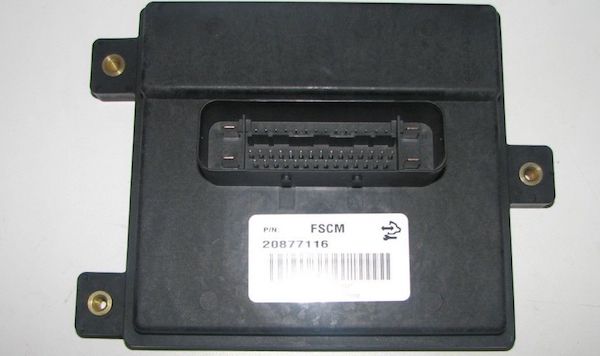
P025D High level of control of the fuel pump module
Content
- P025D High level of control of the fuel pump module
- OBD-II DTC Datasheet
- What does this mean?
- What is the severity of this DTC?
- What are some of the symptoms of the code?
- What are some of the common causes for the code?
- What are some steps to troubleshoot the P025D?
- Related DTC discussions
- Need more help with your P025D code?
P025D High level of control of the fuel pump module
OBD-II DTC Datasheet
High level of control of the fuel pump module
What does this mean?
This Generic Powertrain Diagnostic Trouble Code (DTC) typically applies to all OBD-II vehicles equipped with a fuel pump control module. This may include, but is not limited to, Ford, Chevrolet, Dodge, Chrysler, Audi, VW, Mazda, etc.
Older vehicle systems required very little fuel pressure. On the other hand, these days, with the invention of fuel injection and other systems, our cars require higher fuel pressure.
The engine control module (ECM) meets our fuel needs by relying on the fuel pump module to regulate the pressure in the fuel system. The fuel pump itself is responsible for supplying fuel to the engine.
The glitch here is most likely very obvious, as your car may not even start. An internal combustion engine must operate on three main parameters: air, fuel and spark. Any of these are missing and your engine won't run.
The ECM activates P025D and related codes when it monitors one or more conditions outside a specified electrical range in the fuel pump control module or circuit. It could be caused by a mechanical or electrical problem. Working with or around such a volatile substance makes it somewhat hazardous to diagnose or repair anything here, so make sure you are properly trained and familiar with the associated hazards.
P025D The fuel pump module high control code is set when the ECM monitors a higher than desired specific electrical value in the fuel pump module or circuit (s). It is one of four related codes: P025A, P025B, P025C, and P025D.
What is the severity of this DTC?
I would say that the severity of this code will be determined by your symptoms. If your car won't start, it will be serious. On the other hand, if your car is operating normally, fuel consumption does not change and this code is active, this is not a very serious situation. At the same time, neglect of any mistake can lead to additional costs of time and money.
Example of a fuel pump control module: 
What are some of the symptoms of the code?
Symptoms of a P025D trouble code may include:
- The engine will not start
- Hard start
- Engine stalls
- Poor fuel consumption
- Inaccurate fuel level
- Fuel smell
- Poor engine performance
What are some of the common causes for the code?
Reasons for this code may include:
- Defective fuel pump module
- Defective fuel pump
- Debris in the fuel pump screen
- Wiring problem (eg: frayed wire, melted, cut / open, etc.)
- Connector problem (ex: melted, disconnected, intermittent connections, etc.)
- ECM problem
What are some steps to troubleshoot the P025D?
Be sure to check the Technical Service Bulletins (TSB) for your vehicle. Gaining access to a known fix can save you time and money during diagnostics.
Tools
Some things you may need when diagnosing or repairing fuel pump circuits and systems:
- OBD code reader
- multimeter
- Basic set of sockets
- Basic Ratchet and Wrench Sets
- Basic screwdriver set
- Battery terminal cleaner
- Service manual
Security
- Let the engine cool down
- Chalk circles
- Wear PPE (Personal Protective Equipment)
NOTE. ALWAYS check and record the integrity of the battery and charging system before further troubleshooting.
Basic step # 1
If your car won't start, there is one very simple way to diagnose in the backyard. If your car has a fuel pump installed inside the fuel tank, you can hit the tank with a rubber mallet to potentially knock debris out of the pump when someone tries to start the car. If your car catches fire when you do, your diagnosis is complete, you need to replace the fuel pump itself.
NOTE: Whenever you diagnose / repair anything related to the fuel system, make sure there are no fuel leaks. Working with fuel with metal tools can be avoided. Be careful!
Basic step # 2
Take a look at the connectors and wires. Given the location of most fuel pumps and circuits, access can be difficult. You may need to raise the vehicle somehow (ramps, jacks, stands, lift, etc.) to get better access to the connectors. Typically pump harnesses are sensitive to extreme conditions as most of them run under the vehicle. Make sure the connectors are properly secured and not damaged.
NOTE. Sometimes these harnesses are routed along the frame rails, rocker panels, and other places where pinched wires are common.
Basic tip # 3
Check your pump. Checking the fuel pump can be challenging. If the fuel pump connector is available, you can use a multimeter to run a series of tests to check the functionality of the fuel pump itself.
NOTE. Refer to your service manual for specific tests that can be performed here. There is no general test here, so make sure you have the correct information before proceeding.
Basic step # 4
Is there a fuse? Maybe a relay? If so, check them out. In particular, a blown fuse can potentially cause an open circuit (P025A).
Basic step # 5
To check the continuity of the wires in the circuit, you can disconnect the circuit at both the fuel pump and the ECM. If possible, you can run a series of tests to determine:
1.if there is a fault in the wires and / or 2.what type of fault is present.
Related DTC discussions
- There are currently no related topics in our forums. Post a new topic on the forum now.
Need more help with your P025D code?
If you still need help regarding DTC P025D, post a question in the comments below this article.
NOTE. This information is provided for informational purposes only. It is not intended to be used as a repair recommendation and we are not responsible for any action you take on any vehicle. All information on this site is protected by copyright.

